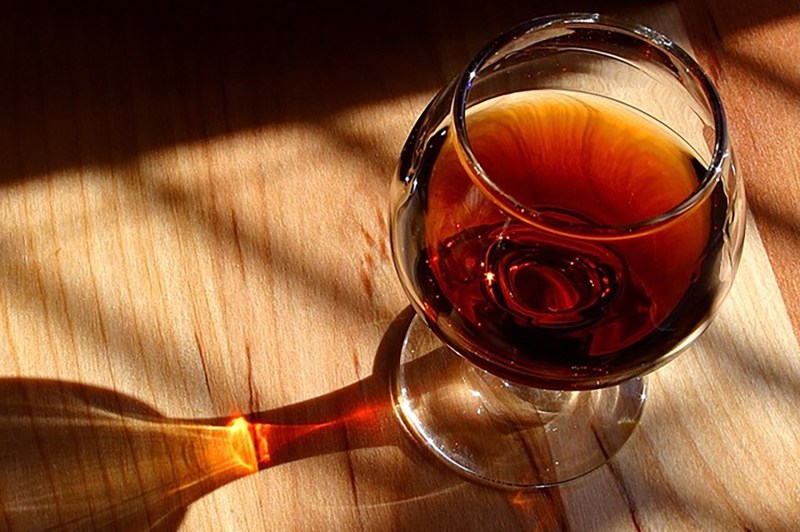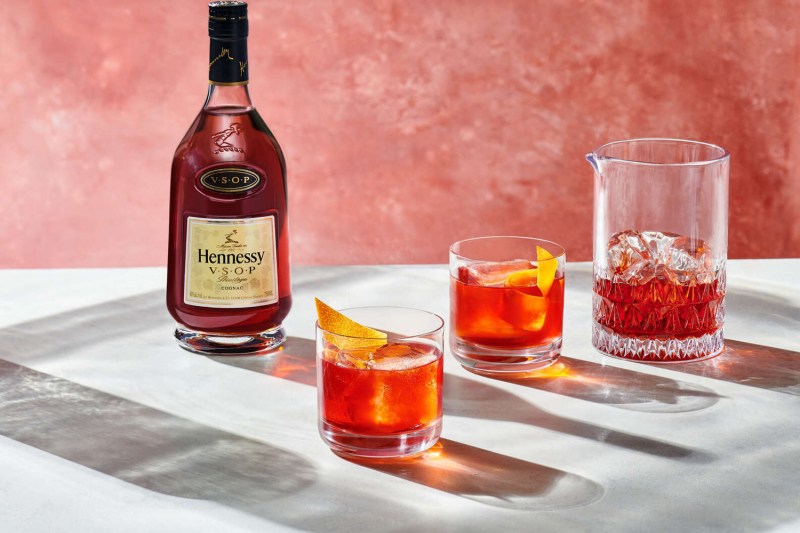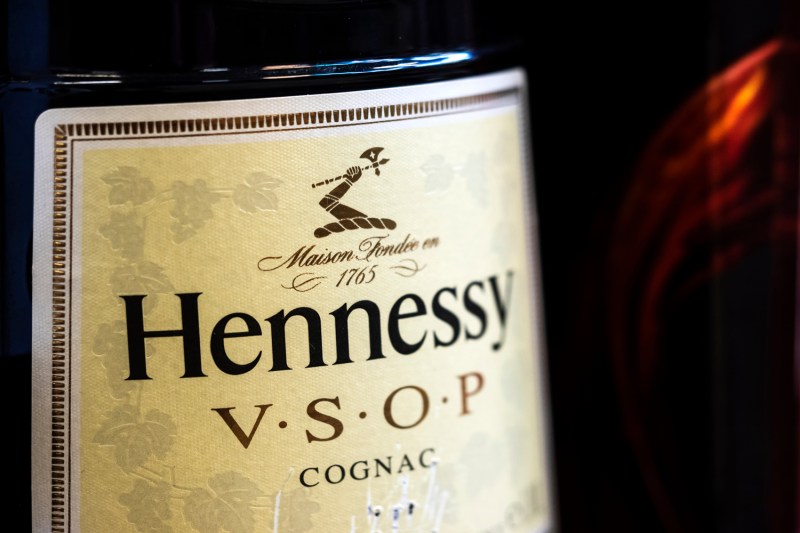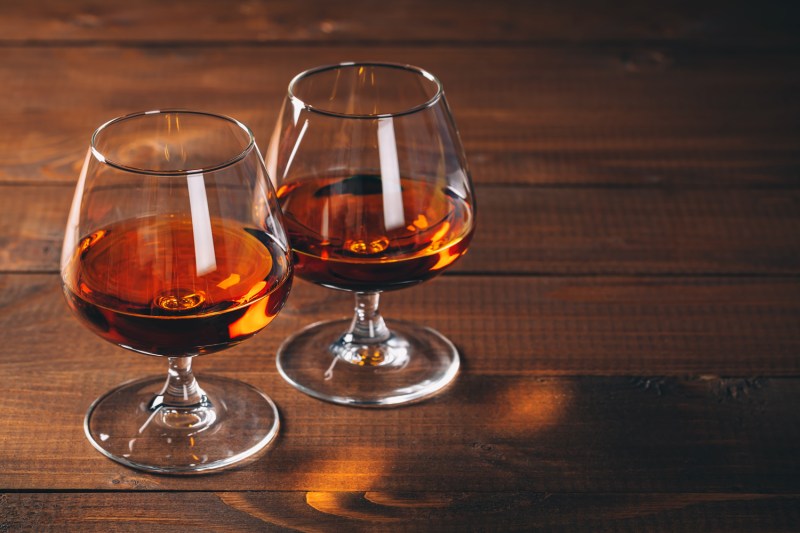
Cognac is somewhat simpler than its name suggests. The best way to understand the French spirit is to treat it like its closest cousin: wine. In short, Cognac is a type of brandy made in its namesake commune in western France.
Similar to the best wine, it is tied to a specific place on the map and must be made from a select list of grapes in a particular style. There are aging and blending requirements tied to Cognac, much like a Chianti Italian wine or Bordeaux. Further, Cognac is best enjoyed in a particular kind of Cognac glass (the wine comparisons continue) that allows you to drink Cognac the right way. Get in there and sniff and savor the stuff.
Many would argue that Cognac is a luxury item, as it has been elevated to celebrity status courtesy of brands by the likes of Jay-Z (D’Ussé), Ludacris (Conjure), and more. Nevertheless, it’s a spirit enjoyed by all types of drinkers, born out of a simple desire from traveling European merchants to have some quality hooch on trips. In a nutshell, the best way to describe

History
There’s a lasting tradition in the history of alcohol of distilling something so that it lasts longer. Dutch merchants did just that with wine in the 17th century, worried that their fermented grape juice might not last a full journey. So, they distilled the stuff, ultimately at least a couple of times for a smooth and enticing grape spirit.
Over generations, Cognac developed its own set of flavors, styles, and guidelines. Meanwhile, production methods improved, and the resulting spirit took on its own personality.
In the mid-20th century, the drink — largely through popular brands like Hennessy — opted to advertise in ways that appealed to more than just the white male consumer. It was a move that much of the alcohol market and businesses in general did not bother making, especially then, due to the pillars of systemic racism and marginalization of many American communities. Cognac went on to become popular among Black Americans starting around World War II and still is today.
Like Champagne or Burgundy, Cognac is tied to one specific French locale. One can produce something like

Classifications
There are four major classifications within Cognac, which dictate and describe how the spirit is aged. Here’s a quick rundown of what you’ll likely see on a label.

V.S.
Short for “very special,” this is the title for younger brandy. It’s aged a minimum of two years and can also be denoted by three stars on the label.

V.S.O.P.
An acronym for “very superior old pale” wherein the youngest brandy in the blend is aged at least four years.

Napoleon
This title is reserved for a blend wherein the youngest brandy is at least six years old.

X.O.
This one means “extra old,” which it is, as the spirit in question must have aged at least a decade to tout the name.

X.X.O.
This title takes it an extra step, as you may have guessed, with 14 being the magic age for minimum aging time.

Hors d’Age
“Beyond age” refers to a Cognac made much like X.O., but with some wiggle room, as producers can go above and beyond those requirements. Often, these Cognacs have been aged several decades.

Makeup
What are the ingredients of Cognac? The primary role player is Ugni Blanc, a wine grape known in France as Saint-Émilion (again, due to the eponymous region it hails from). This grape, also called Trebbiano, is the most widely planted white variety in France. This grape, along with Colombard and Folle Blanche, must make up some 90% of the final blend. A shortlist of other grapes is allowed in the balance, like Folignan and Sémillon.
The juice ferments and then is distilled in copper stills. It’s then aged in wooden barrels from either Limousin or Troncais. Finally, it’s blended, bottled, and enjoyed. In the end, the spirit tends to clock in at about 40% ABV and shows refined notes of deep fruit, citrus, dates, spice, and more. It drinks like a delicious, more intense version of wine.

Regions
Six crus fill out the Cognac map, all huddled around the town of Cognac. Just as with wine, these physical boundaries are defined by soil type, microclimate, elevation, and more — a combination of important factors that in turn change the makeup of the grapes and, ultimately, the flavor and feel of the
From largest to smallest, the six regions are Fin Bois, Petite Champagne, Grand Champagne, Bon Bois, Borderies, and Bois Ordinaires. Fin Bois is renowned for its generally supple-textured Cognacs, while Petite Champagne and its chalky soils tend to produce Cognacs with a lot of nuance and roundness. These six districts have been firmly set since the 1930s.
Get out there for a taste! You’re probably tired of the wine analogies by now, but with Cognac, it’s much the same: It’s all about experimenting and discovering and honing in on what you like. Start reading the label’s fine print, get your snifter ready, and have some fun.

Try a classic Cognac cocktail
While the best way to enjoy a fine Cognac is to sip it neat after a good meal, it also goes great in some classic cocktails. Here’s how to make perhaps the most famous
Sidecar
While the exact history of the Sidecar is not known, it is believed to have been invented near the end of World War I, with some saying it originated in London and others claiming Paris as the cocktail’s birthplace. The drink was named after the sidecar on a motorcycle, which was widely used at the time. No matter where it originated, this mix of Cognac, orange liqueur, and lemon juice is still a cocktail bar staple around the world today.
Ingredients:
- 1 1/2 ounces Cognac
- 3/4 ounce orange liqueur (such as Cointreau, Grand Mariner, or triple sec)
- 3/4 ounce freshly squeezed lemon juice
- Orange twist for garnish
- Sugar (optional- to be used to rim the glass)
Method:
- If using a sugar rim, coat the rim of a coupe glass with sugar and set aside.
- Fill a shaker with ice.
- Add the Cognac, orange liqueur, and lemon juice to the shaker and shake until well-chilled.
- Pour into the glass and garnish with the orange twist.
Editors' Recommendations
- How to craft a heavenly vodka martini: Shaken or stirred
- We know the most popular cocktails — Try these underrated drinks instead
- Ranked: 5 popular Scotch whisky bottles (all under $50)
- Your guide to the pescatarian diet for healthier living
- Cognac vs. brandy: What’s the difference?


